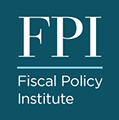Recovery Act Keeping Roughly 419,000 New Yorkers Out of Poverty
December 17, 2009. New estimates released today by the Center on Budget and Policy Priorities (CBPP) are based on seven provisions of the American Recovery and Reinvestment Act (ARRA) that directly affect individuals: three tax credits for working families, two unemployment insurance expansions, an increase in food stamps, and a one-time payment for retirees, veterans, and people with disabilities. Not only is the Recovery Act is creating jobs, helping close state and local budget gaps, and boosting the broader economy, it is also softening the [...]
